Have you ever felt overwhelmed by the complicated classifications and technical jargon when comparing or choosing lathe chucks? Whether you’re an experienced machinist or a complete beginner, understanding a few key principles can help you quickly grasp the differences and uses of various chucks. This article introduces the types of lathe chucks from the most practical perspective, helping you easily choose the most suitable tool and make your machining process much smoother.
Types of Lathe Chucks: How are they Categorized?
Lathe chucks are essential components in machining, as they are responsible for securely holding the workpiece in place during operation. If you’ve ever tried to buy a lathe chuck or simply browsed a product catalog, you might have been overwhelmed by the sea of names—2-jaw chucks, scroll chucks, 4-jaw independent chucks, and more. It often feels confusing because the same product can fall under multiple categories, and the terms are used interchangeably.
To build a clear understanding, you can look at types of lathe chucks from three main perspectives:
- By number of jaws: 2-jaw chucks, 3-jaw chucks, 4-jaw chucks, and 6-jaw chucks
- By clamping mechanism: scroll chucks (self-centering), independent chucks, and collet chucks
- By actuation method: manual chucks, hydraulic chucks, and pneumatic chucks
By considering these three aspects, you’ll be able to understand the naming and uses of different lathe chucks and choose the most suitable type based on workpiece shape, precision requirements, and production volume.
Number of Jaws
2-Jaw Chucks
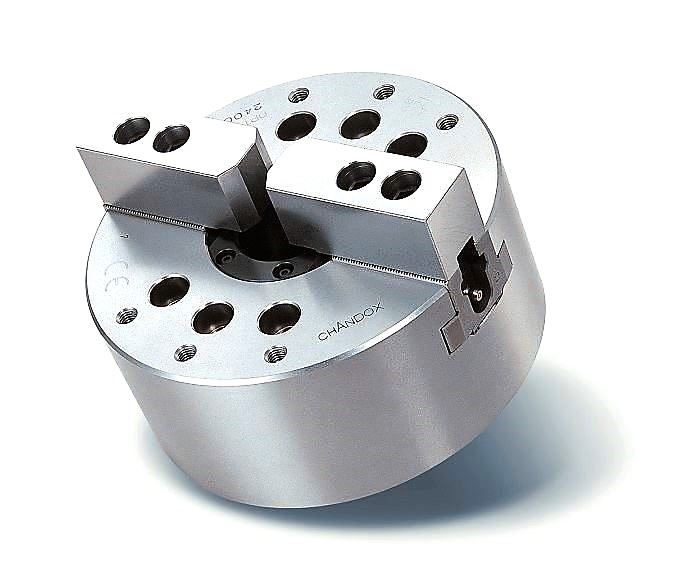
A 2-jaw chuck consists of two opposing jaws. These are typically independent chucks, where each jaw can be adjusted individually. This design is ideal for clamping rectangular, elliptical, or asymmetrical workpieces.
It offers excellent flexibility when holding irregularly shaped parts, allowing the jaw distance to be adjusted to the workpiece's dimensions for a highly stable grip. However, since they lack a self-centering function, concentricity must be set manually, which results in a more time-consuming setup process.
3-Jaw Chucks
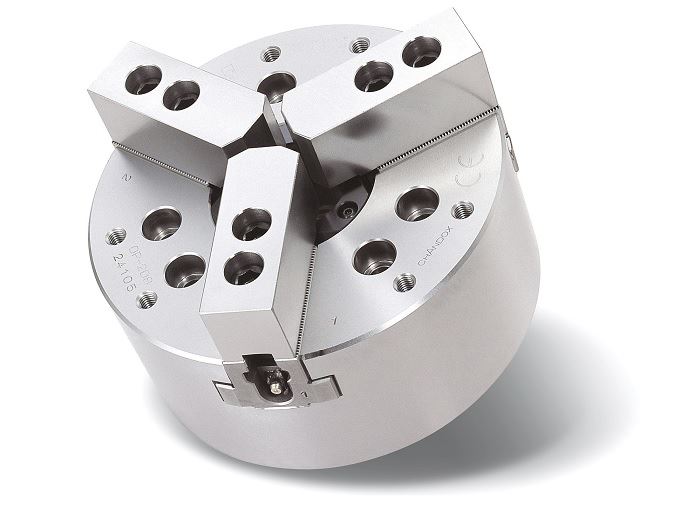
3-jaw chucks are usually scroll chucks, with all three jaws moving simultaneously for quick, self-centering clamping of cylindrical or hexagonal workpieces. They are easy and efficient to operate, making them especially suitable for mass production of standard parts.
The jaws are driven by a scroll plate, which ensures synchronized movement for rapid positioning and clamping. However, since the jaws cannot be adjusted individually, 3-jaw chucks are not suitable for irregular or eccentric workpieces.
4-Jaw Chucks
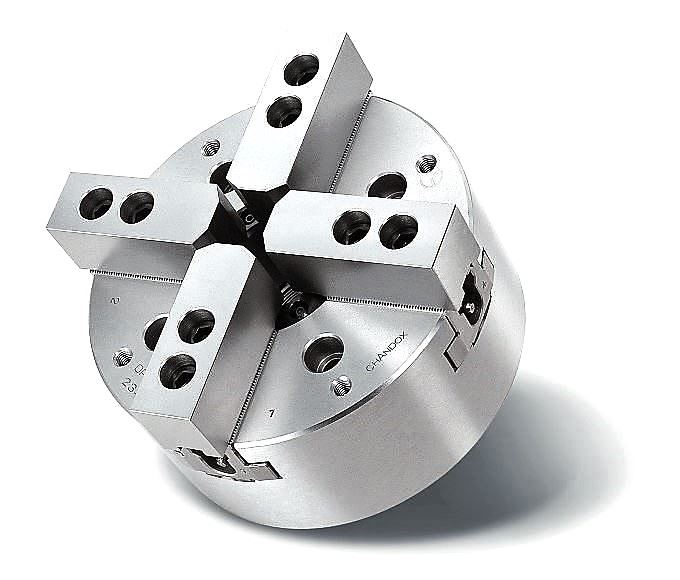
A 4-jaw chuck is typically an independent chuck where each of the four jaws can be adjusted separately. This design makes it ideal for clamping square, rectangular, or other irregularly shaped workpieces.
Since each jaw moves independently, it allows for highly precise centering of the workpiece. It also offers the versatility to perform eccentric turning (offset machining). While the setup process requires more time and skill compared to a 3-jaw chuck, it provides superior clamping accuracy and accommodates a wider range of applications.
6-Jaw Chucks
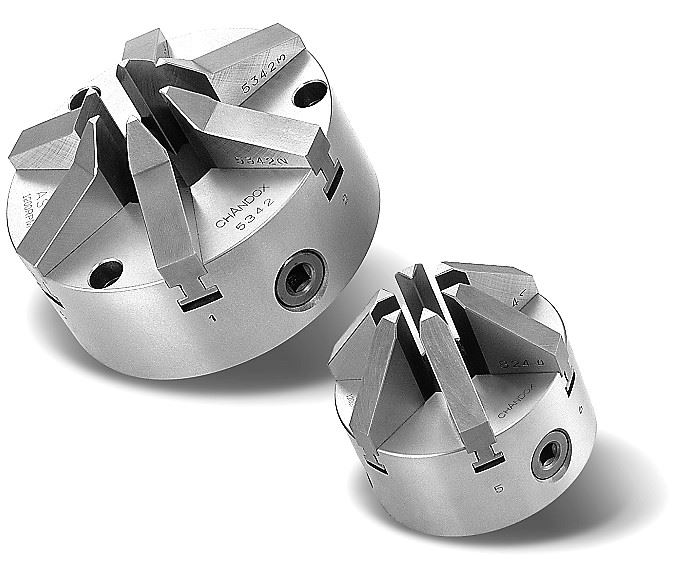
A 6-jaw chuck is a self-centering design, typically a scroll chuck, where the six jaws distribute clamping force more evenly across the workpiece. This makes it exceptionally well-suited for holding thin-walled or easily deformable round parts.
The design ensures a secure grip while minimizing workpiece distortion and surface marring, making it ideal for high-precision applications such as machining aerospace components or thin-walled tubing. Operationally, a 6-jaw chuck is similar to a 3-jaw chuck, but its additional contact points provide superior concentricity and better surface protection.
Clamping Mechanism
Scroll Chucks
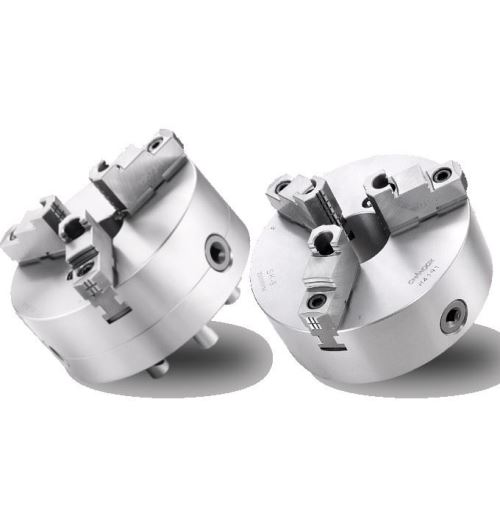
Scroll chucks contain an internal scroll plate mechanism that simultaneously drives all jaws to move radially inward or outward, which is why they are also known as self-centering chucks.
When the chuck key is turned, the jaws close or open in unison, allowing for rapid and repeatable workpiece positioning and clamping. Their simple operation makes them ideal for mass production and CNC automation. These chucks are best suited for symmetrical workpieces, such as round or hexagonal bars, as they achieve good concentricity without requiring complex manual adjustments.
Independent Chucks
Independent chucks allow each jaw to be adjusted separately, making them ideal for precisely clamping asymmetrical or eccentric workpieces. Although setup takes more time and requires more skill, the flexibility and precision of independent chucks are unmatched by self-centering chucks.
Collet Chucks
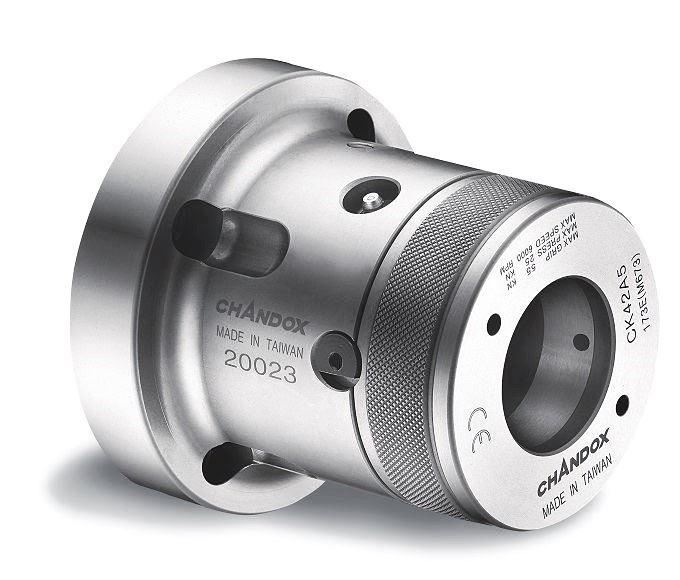
Collet chucks utilize a flexible collet to tightly envelop the workpiece. As the collet is drawn into its tapered sleeve, it contracts and applies uniform clamping force. This mechanism ensures the workpiece remains stable and accurate, even at high rotational speeds.
While this type of chuck offers high precision, its clamping range is very limited, as each collet is designed for a specific diameter. Consequently, they are most commonly used for the precision machining of small, cylindrical workpieces.
Actuation Method
Manual Chucks
Manual chucks rely on an operator using a wrench or key to adjust the opening and closing of the jaws, making them suitable for low-volume machining or repair applications.
With a simple construction, low cost, and easy maintenance, manual chucks are standard equipment on conventional lathes and for finishing or truing work. However, when workpieces require frequent changes, the manual adjustment process increases machine downtime and can hinder productivity. While less efficient than power chucks, they remain a highly cost-effective solution for traditional machining tasks.
Hydraulic Chucks
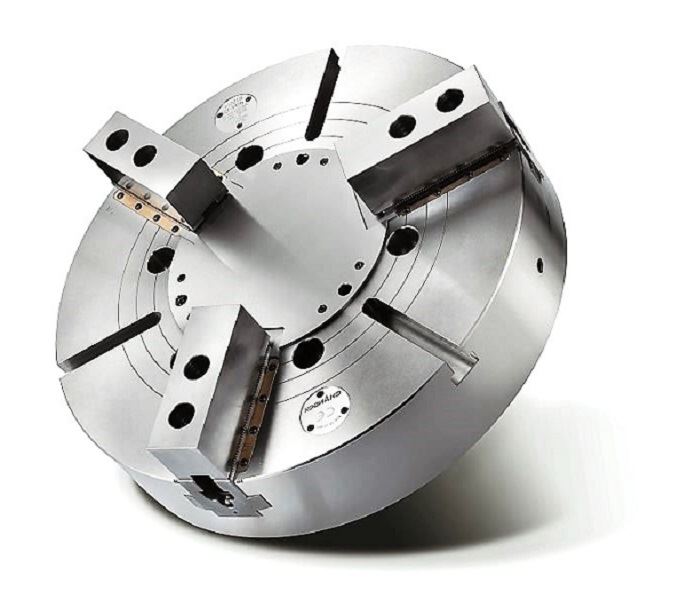
Hydraulic chucks use a hydraulic cylinder to automatically actuate the jaws and clamp the workpiece, providing strong and stable clamping force. They are ideal for high-volume and high-precision machining. Hydraulic chucks are commonly paired with CNC production, significantly reducing setup time and improving concentricity, which ensures superior surface quality.
Pneumatic Chucks
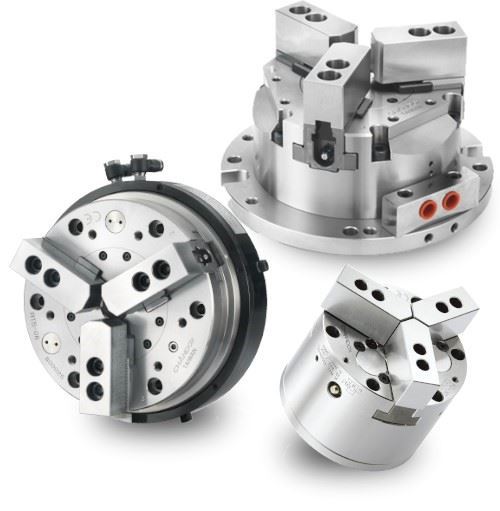
Pneumatic chucks are powered by compressed air, using a pneumatic cylinder to automatically open and close the jaws. They provide stable clamping force and fast operation, making them especially suitable for high-efficiency automated machining and applications where frequent workpiece changes are required. Compared to hydraulic systems, pneumatic chucks have a simpler structure and lower maintenance costs.
Conclusion
Whether it’s a traditional manual chuck, a powerful hydraulic chuck, or a highly efficient pneumatic chuck, each of these types of lathe chucks has its own suitable applications and unique advantages. Choosing the right chuck can significantly improve machining accuracy, reduce setup time, and enhance overall production efficiency.
CHANDOX is dedicated to developing and manufacturing a wide range of products. If you’d like to learn more or explore our selection of professional chucks, feel free to contact us for more information.